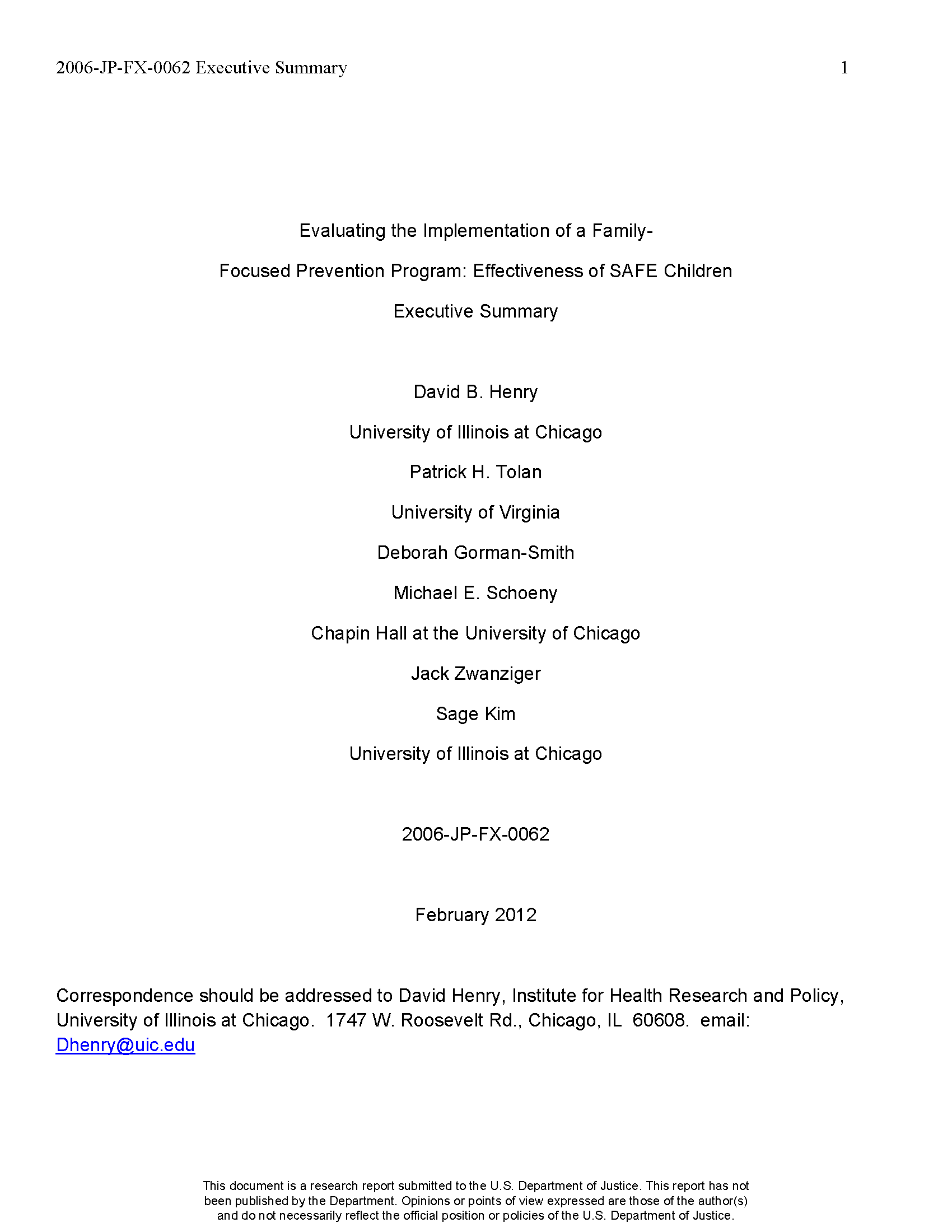
This is an evaluation of the SAFE Children intervention. SAFE Children is a family-oriented delinquency prevention program for parents facing the challenges of raising children in inner-city communities. The program resulted in increased levels of academic achievement and parental involvement in school. Children and their families were randomly assigned to treatment and control groups. Program participants increased reading skills at a rate near national norms. In contrast, control students were just below the national average. Program families stayed involved in their children’s schooling over the 2½ years of the study. Control group families showed decreasing parental involvement. Program children in high-risk families showed decreased aggression over time, but high-risk controls had no change in aggression. Program children from high-risk families also had positive increases in measured concentration and social competence; control children showed no change in these developmental areas. Among high-risk families, parental supervision improved for those in the program, but was unchanged for high-risk control families. In a longer-term booster intervention and follow-up study, evaluators recruited and tracked 382 of the original 424 participants. The program consists of a reading tutoring program and a family-focused intervention (20 weeks duration) provided when the child is in first grade. Weekly multiple-family group meetings address issues of parenting, family relationships, child development and parental involvement in their child’s schooling.
